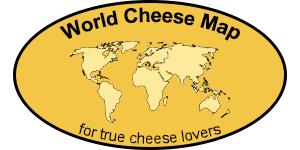Made on both sides of the Vosges mountains, and formerly named “Munster” on the Alsace side and “Gerome” on the Lorraine side, they were united in 1978 under AOC denomination (protected name status). The origin of this cheese can be traced back to the Middle Ages. The milk for production of Munster Gerome comes from the Vosgiennes cows, a breed that was imported from Scandanavia in the 18th century and is known for the high protein content of their milk.
During the summer, the best cheeses are often made from the milk of cows grazing the higher mountain pastures. During the winter the animals are moved closer to the farm and although the cheese can still be excellent, they tend to have slightly different characteristics. Rind and aroma are the keys to Munster’s maturity. Young cheeses have a pale rind that is pinkish-white in color, soft, but relatively dry and not overly pungent. As the cheeses age and receive their regular brine washes, the rind is transformed to a rich, red-orange color with a distinctly sticky (but not slimy) surface and an assertive, pungent smell that (love it or loathe it) cannot be ignored.
Credits: Culture, Country Cheese Co.
